The visual representation of time has changed significantly over the centuries. With the advent of digital technology starting as early as the 1950’s, the more traditional methods of using a dial face with moving hands to represent the passage of hours, minutes and seconds were often replaced with numerical displays.
Today most individuals are aware of the ubiquitous Light Emitting Diode (LED) displays that are often still seen on small digital alarm clocks; however many people are not aware that prior to LED displays (and now more commonly liquid crystal displays, or LCDs) there was a fascinating evolution of technology used to represent numerical information.
The PCC Time Machine is an attempt to capture this evolution of display technology and implement it into a large “clock” as a method of maintaining a small history of these different display technologies.
A number of the display devices implemented in the clock have been collected over the years from personal collections, swap meet finds, and overseas internet purchases. The selection of devices in no way represents all of the different technologies that existed, particularly as older technology becomes more difficult to find (and prohibitively expensive!). Additionally, from seconds to years there is a limited scope of different segments of time that can be displayed.
As you read through this project log we hope that you enjoy the story of the clock’s evolution and learn a little about how the digital representation of information has changed over time.
The Uber Clock
Our story starts with Professor Tom Thoen’s class in PCB design and fabrication in Spring 2014 at Pasadena City College. The project was to create a clock, with each student responsible for an element of time/ aspect of the clock, including designing a circuit board in Eagle, getting the board manufactured, and soldering it/ putting it together. The time frame was 4-6 weeks to complete project.
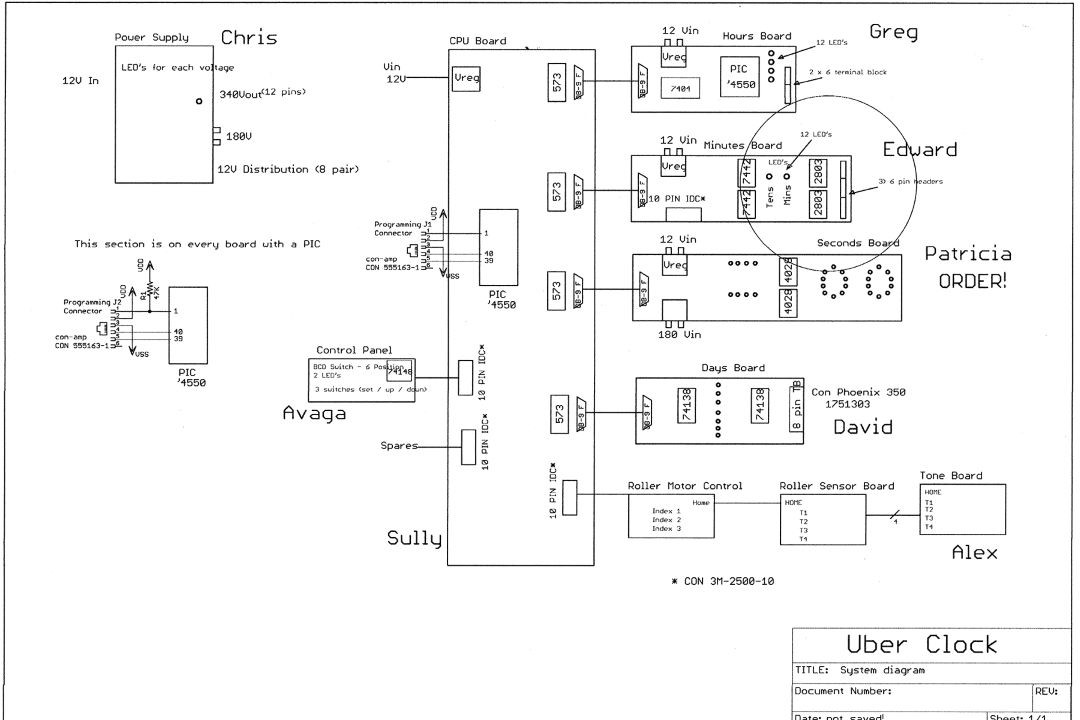
Schematic of the original design
The Original Clock Boards
The Hours
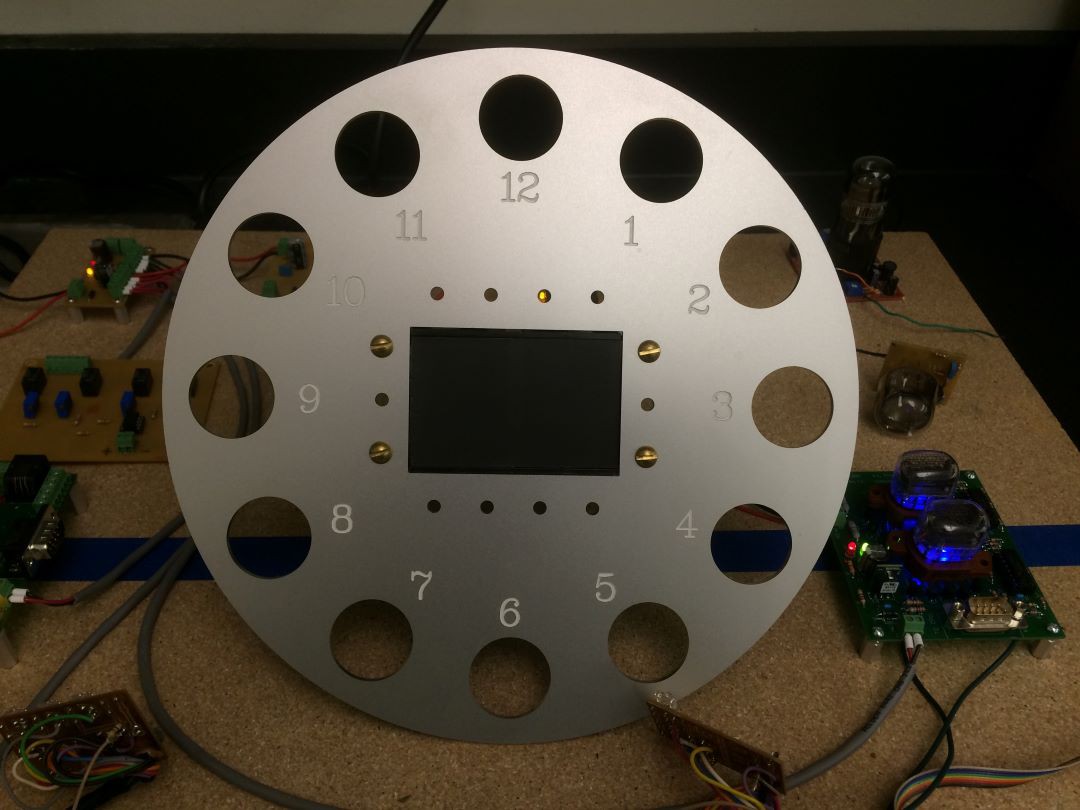
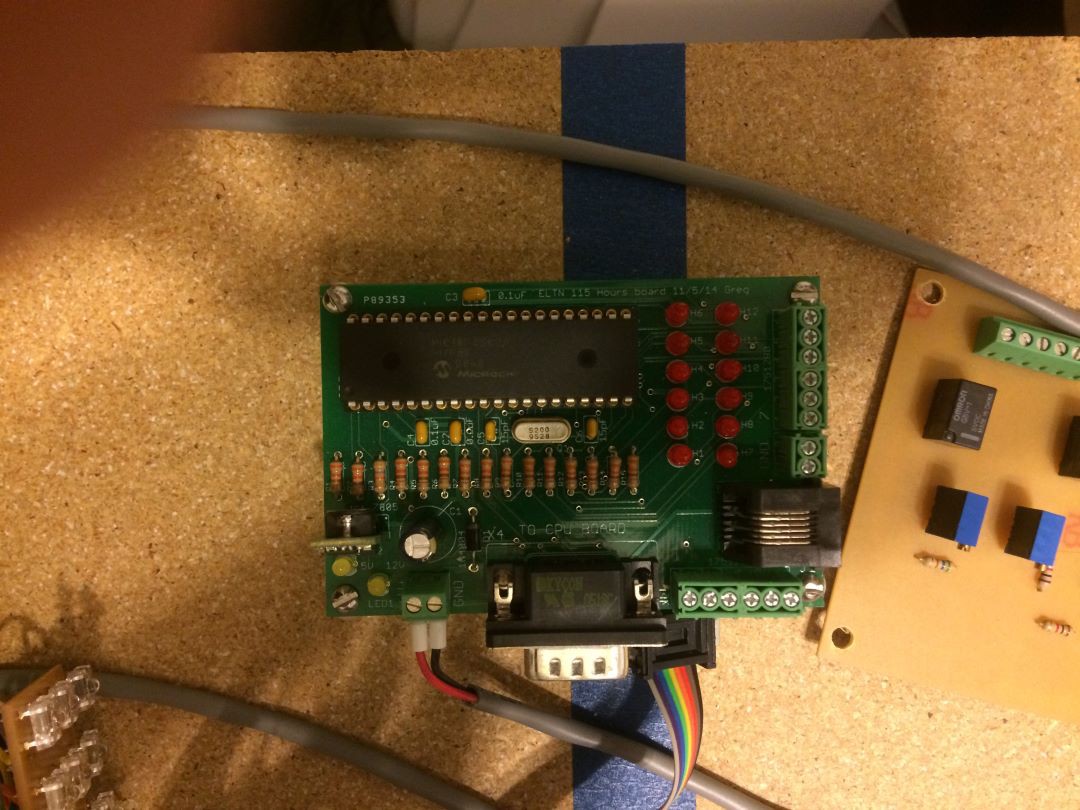
The Hours Board as designed by Chris Liang
The Minutes
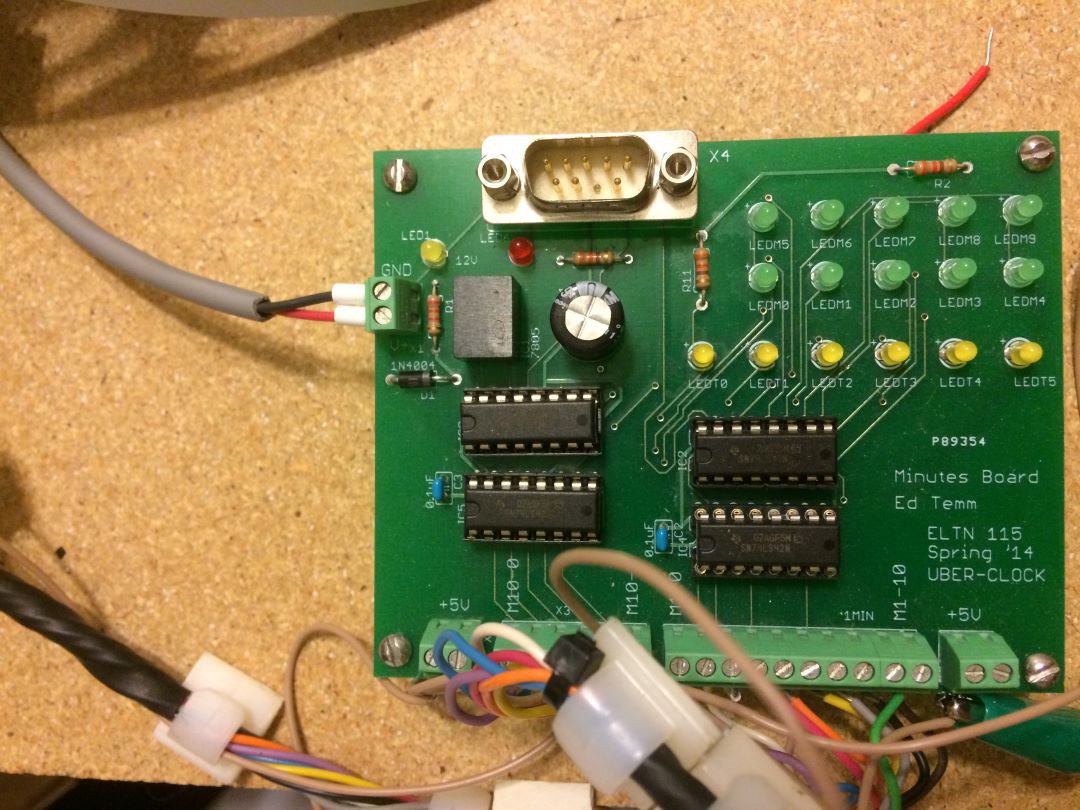
The Minutes Board by Edward Temm

The Minutes Display Board by Alex Janss
The Seconds
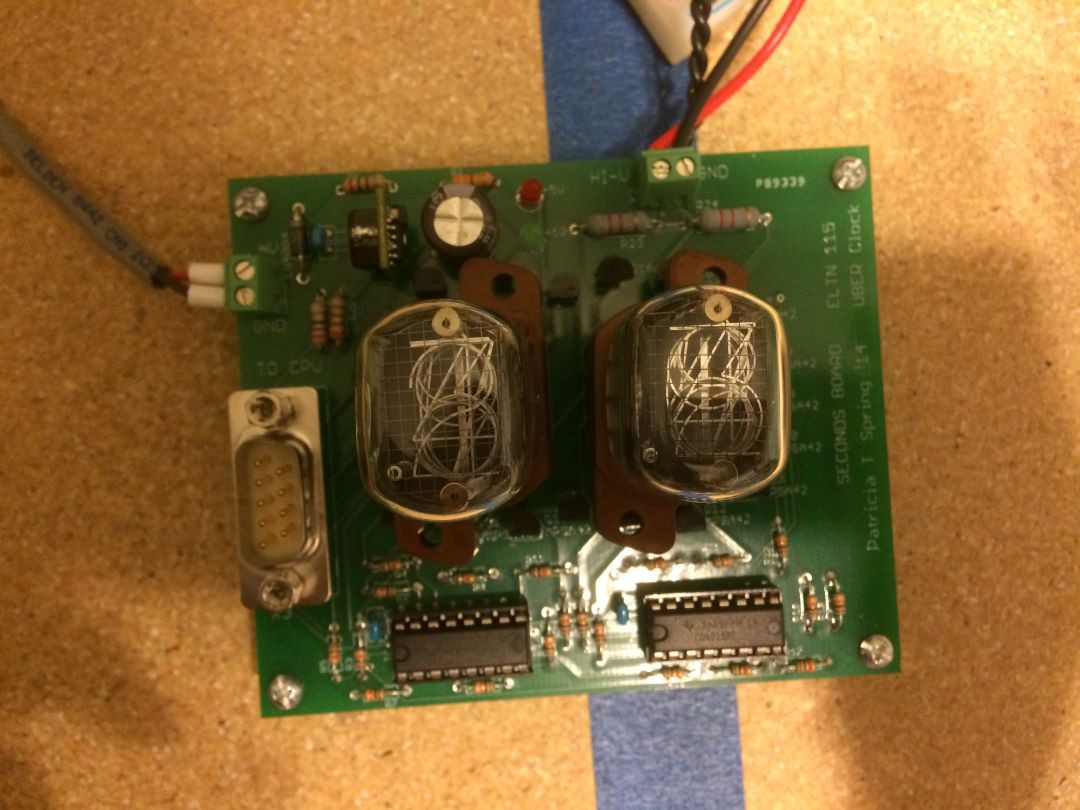
The Seconds Board as designed by Patricia Tan
Days of Week
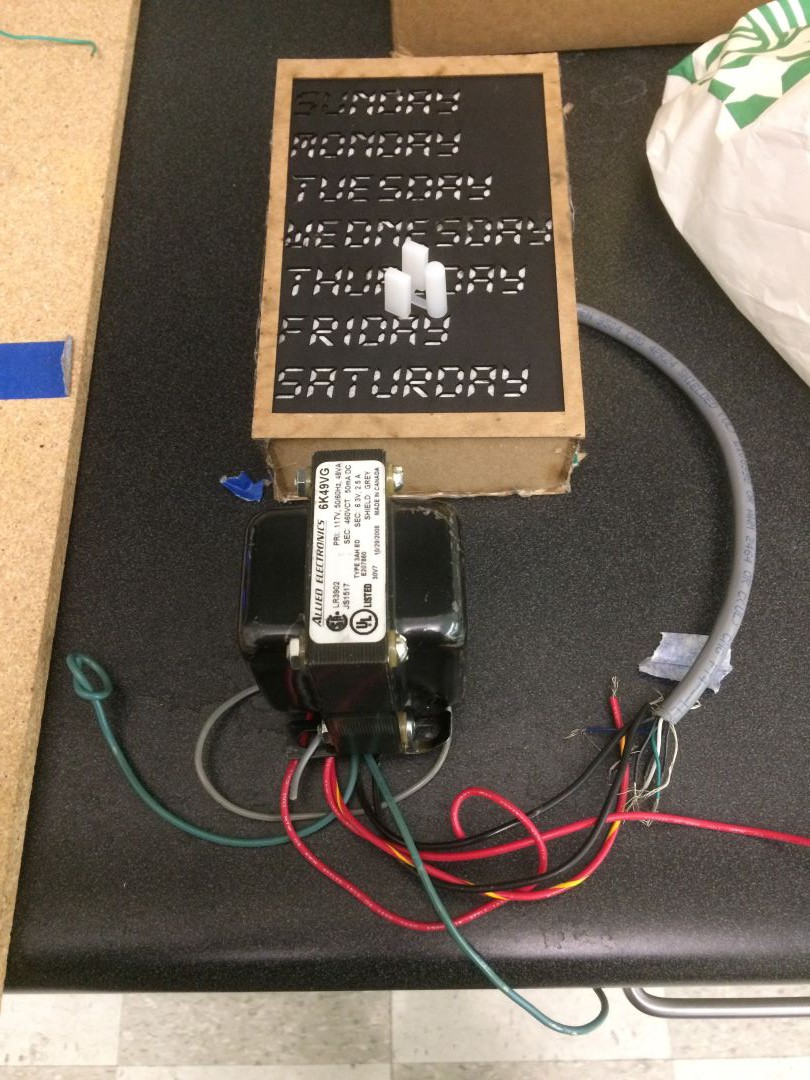
Days of Week (light-up with cut-out text) by Milas Clark

Day of Week board by Milas Clark
Time Setting
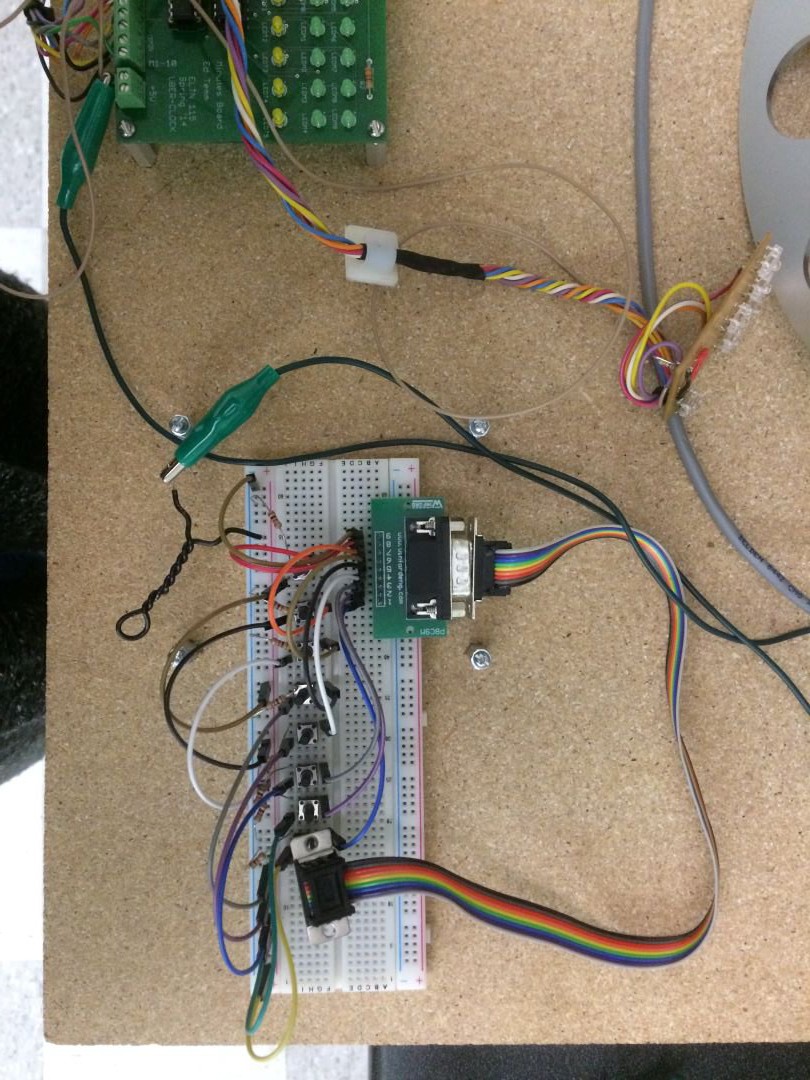
Time Setting Prototype by Avaga Marksi
The Chime Mechanism
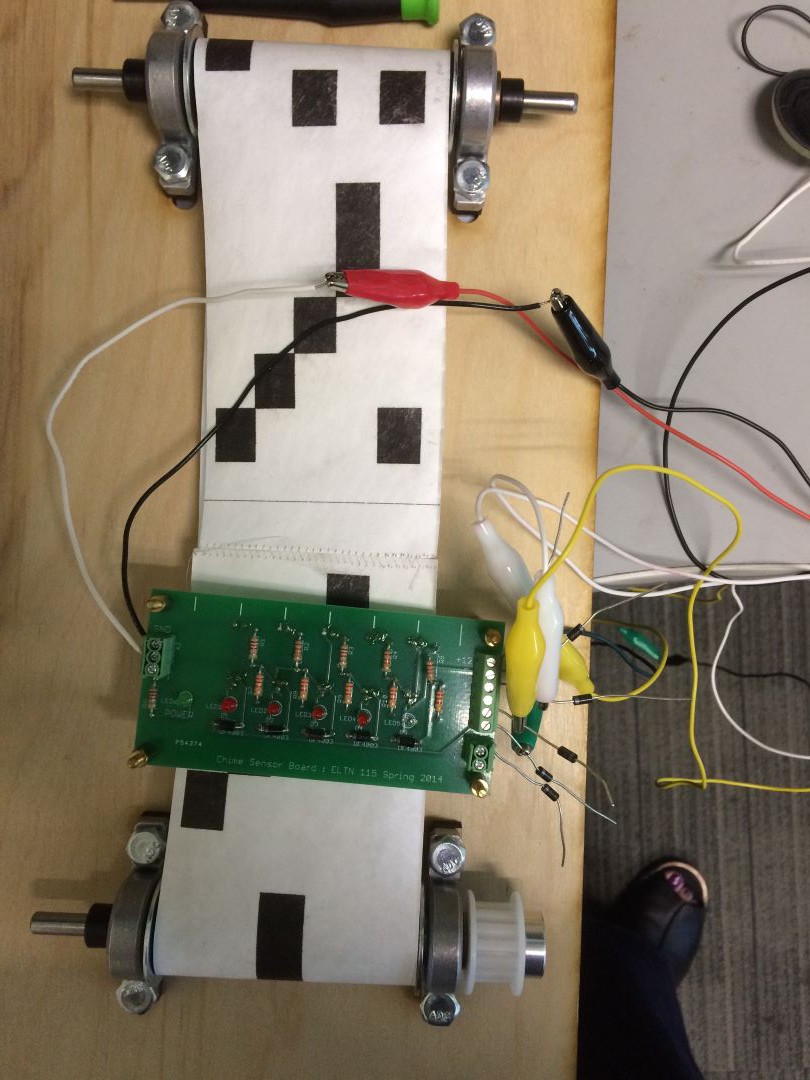
Chime Mechanism by Tom Thoen
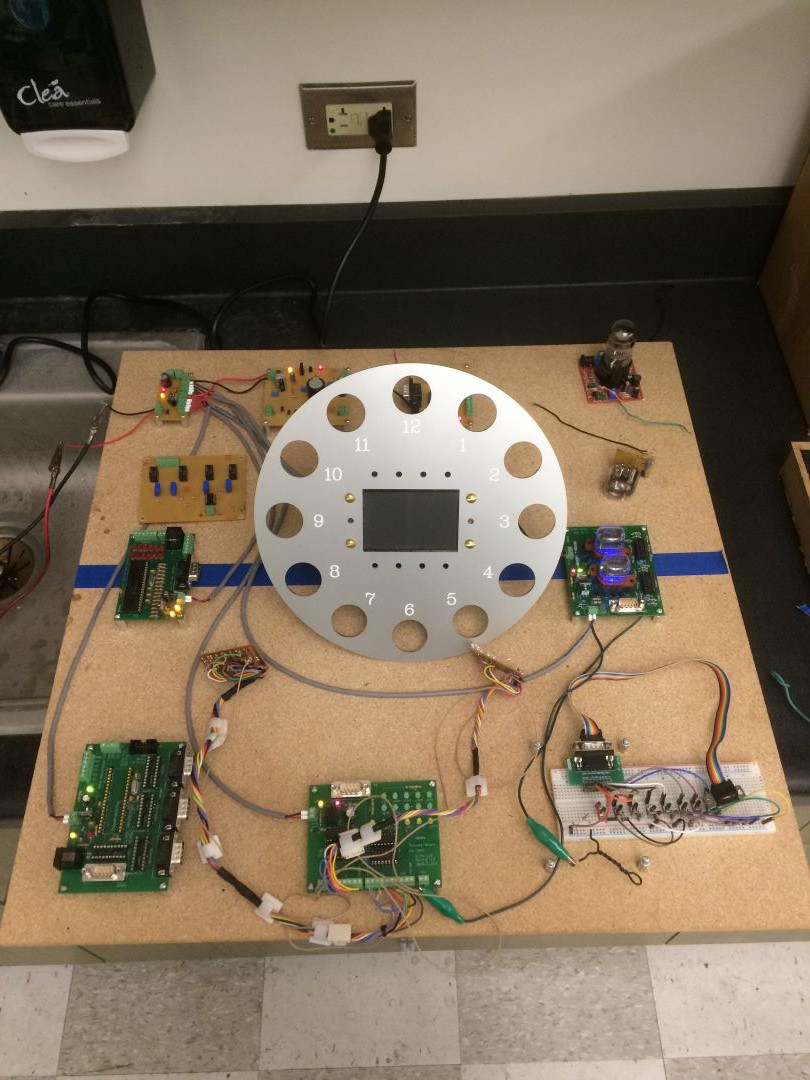
The clock after Spring 2014
Unfortunately, the project couldn't be completed that semester because there was not enough time to complete a project of this scale and a lack of good prototyping technology at the time. Boards were proofed out using the Othermill, but proved very difficult to solder. Also, as it was a PCB design class, no individual person had been assigned to code the clock overall. The project gathered dust, until...
It Lives Again!
The project restarted in January 2017 with Cat Morse with the goal of designing, fabricating, and completing the clock. The overall concept was reimagined as a grandfather clock celebrating the beauty of electronics, and expanded to utilize some different and additional display technology. One of the main parameters that dictated the new design was that, where possible, the clock should be made in-house, to highlight what could be made with campus resources and technology. David Harbottle joined the team in February 2018 to lend his electronics, coding, and maker-space manufacturing expertise.
From its beginnings as pieces lovingly collected from disparate parts of the world, to jumbles of spaghetti and collecting dust (twice!), to finally being featured at Supercon 2024 (!), please join us over the next few weeks as we share how we got here!
 C
C
Discussions
Become a Hackaday.io Member
Create an account to leave a comment. Already have an account? Log In.